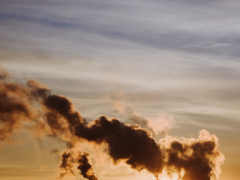Transition to clean cooking good for people and planet
More than 700 million people in Sub-Saharan Africa still use traditional biomass (wood or charcoal) on open fires or inefficient traditional cookstoves for cooking. This results in serious health effects; each year, between 150,000 and 250,000 children under the age of 5 in Sub-Saharan Africa die as a result of household air pollution. A new report by PBL Netherlands Environmental Assessment Agency shows that a transition towards clean cooking not only reduces child mortality, but also can save money and has positive effects on biodiversity and climate.
Universal clean cooking requires additional policies
Without additional policies, the number of people in Sub-Saharan Africa relying on traditional biomass is projected not to decline until 2030. This means that in order to achieve the policy goal of achieving universal access to clean cookstoves (stoves that burn on pellets, LPG, (bio)gas, or use electricity), additional policy interventions are needed.
Phasing out traditional biomass has many advantages
Phasing out traditional biomass by 2030 is projected to strongly decrease child mortality related to household air pollution (55%), lead to much less wood demand (70%), and decrease greenhouse gas emissions (40%), compared to a scenario in which traditional biomass is not being phased out. Total costs for fuel and cookstoves do not have to be higher in such a scenario, as traditional cookstoves are very inefficient and therefore require a large amount of wood. To completely eliminate health risks, a full transition towards electricity, biogas, LPG, or natural gas is needed.
Various clean fuels can play a role in the transition
The best cooking technology differs per country, area, and population, and depends on income, infrastructure, and availability of biomass. Advanced efficient biomass cookstoves could be an intermediate solution for poor rural households. Biogas cookstoves can play an important role in rural areas where dung and agricultural residues are available, although, currently, biogas digesters are very expensive. For urban areas, cooking on electricity, LPG and natural gas are attractive options.
Affordability of clean cooking is crucial
Annual fuel expenses are on average much higher than annual cookstove expenses. The relatively low purchasing costs of clean cookstoves, nevertheless, can still be an important barrier for households to switch to cleaner cooking. Better funding mechanisms for clean cookstoves could help to overcome this barrier and thereby help to improve health, biodiversity, and climate. In addition, informing people about the benefits of cleaner cookstoves could help to increase and improve their use. Finally, research and development could lead to a further improvement in the efficiency and a decline in the purchasing costs related to modern cookstoves.




